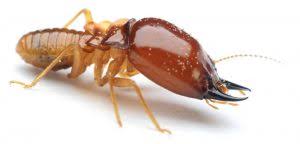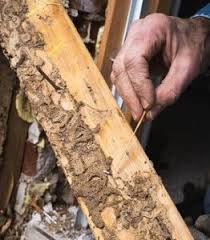
Termite Control Trivandrum Fundamentals Explained
We will discuss your pest problem, arrange a survey if necessary, and supply a quotation and recommendations.
Concealed in locations which often go undetected, termites destroy timber internally, leaving only a wafer-thin coating to protect them from the exterior environment.There is no predictable pattern or elevation restriction for their damage, together with termite-infested sites found in roofs and even high-rise construction.All new homes, including extensions, built within areas designated by municipal councils to be exposed to termite infestation, have to have some kind of management against termite attack.This is a requirement of the Building Regulations 2018 (the Regulations) and means the construction of all new buildings and additions are required to be guarded against termite infestation in accordance with Australian Standard AS3660.1 2000 Termite management Part 1: New Building work.
Termite managementTermite management involves reducing the chances of major damage caused by a house by termite infestations.Termites cause greater harm to Australian houses than fire, floods and storms combined and it's damage not covered by family insurance.The Regulations require new buildings, including alterations and extensions, constructed within designated termite-infested areas to have some kind of management against termite attack.The National Construction Code Volumes One & 2 provide two alternative approaches for termite management:using termite resistant materials for its primary structural elementsthe installation of a substance or physical barrier system. .

Rumored Buzz on Termite Control Under Slab
How can termites be managedAt design stageIf you're building a new house or significant extension, you can select to use termite resistant main structures such as concrete slabs, termite resistant wood and metal frames.By doing so you restrict the potential for irreparable harm to secondary and shallow elements that are easier to find and more economical to replace.This option may decrease future ongoing costs and uses conventional materials and construction procedures and does not rely on a normal maintenance system or professional liability policy.Alternatively you can specify a chemical or physical barrier to be installed during construction.
While that does not include concrete, cracks as small as 1.5mm might allow termites to find their way into a cavity like walls and beneath floors.When buying a houseIt is strongly recommended that before you buy a house, you have an expert inspect it for termite activity.The price of a complete report pales against the potential expense of repairs.Ensure you engage a properly qualified, experienced and insured pest inspector and ask them to record on the kind, age and condition of any termite management system which may be installed, linked here and on the substances employed for critical structural elements.Long-term managementLong-term management can be gained through the application of chemical or physical obstacles (or both) to prevent termites from penetrating the structure.
Termite management systems are designed to prevent concealed access and force termites into the open where their mud tunnels can be easily detected.Physical obstacles range from small graded stone particles, stainless steel net and chemically impregnated composite products. Termite resistant substances are designed to protect the crucial concealed structural elements of your home, while ensuring that a'small target' for any termite activity.Ensure you use a product that's been certified and complies with the Australian Standard and, most importantly, you must arrange for suitably qualified operators to perform regular inspections.You should also be completely informed about ongoing maintenance requirements and also the most effective pre- or - post-construction options. .
How can I identify termite activityTermite activity is often difficult to detect since it generally happens in concealed areas.Regular visual inspections in and around your home are recommended to identify any potential devastating activity. Things to look for include:feeble timber that breaks readily revealing wafer thin go to the website layers skirting boards are often the first point of damagechanges in corner fascia under gutters, as termites are attracted to damp or moist areasmud-like tubes or substance around external footings/brickwork, or internal fittings like support pipes and electrical plugscracks/holes in plaster or timber using a fine dust residue.surrounding trees, timber piles and garden beds (up to some 50 metres radius around the home) to identify whether a colony is active nearby.If you suspect any termite activity you need to engage an expert to conduct a full inspection. .
Termite Control Types Fundamentals Explained
What should I do if I find termitesShould you uncover termites, then attempt to put things back as they were.Surface spraying and ripping out floorboards, architraves or other building material may kill some termites in these timbers but in doing so you've lessened the chances of an expert effectively treating the main nest.